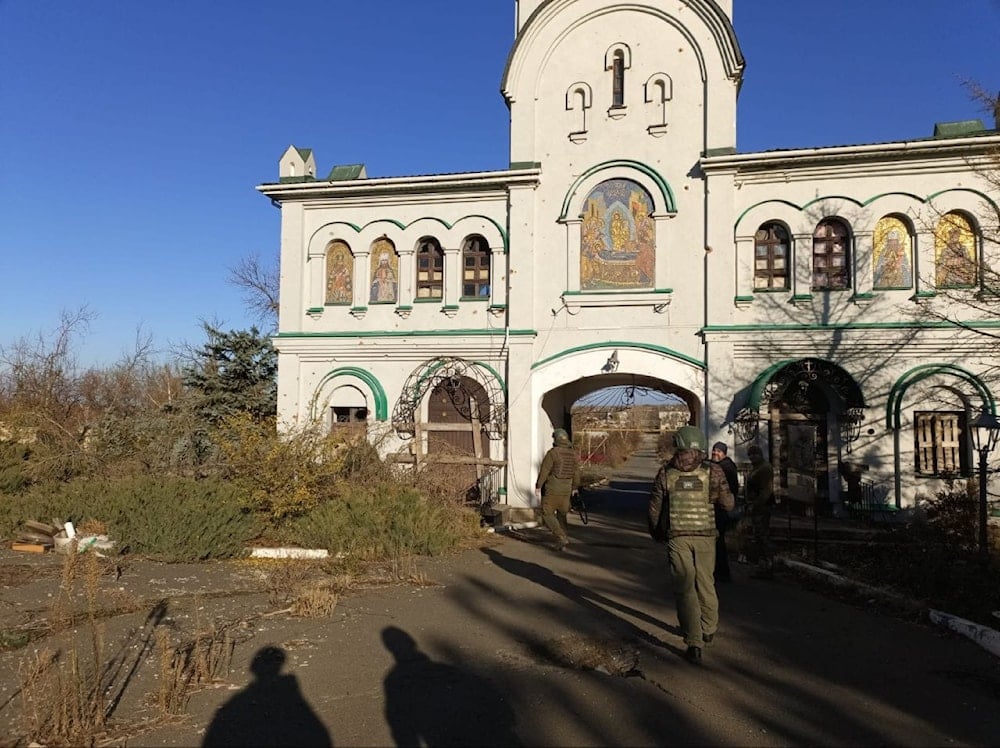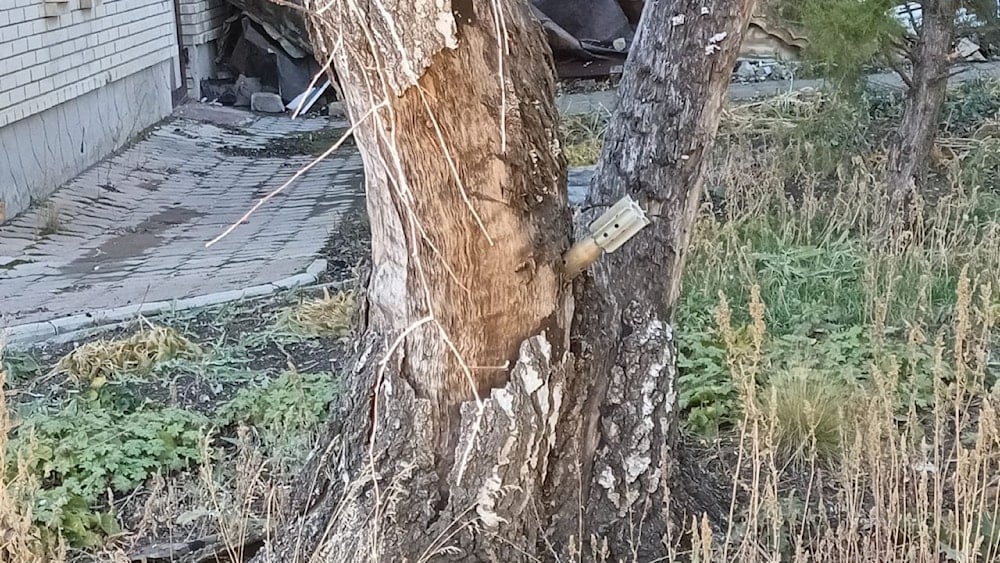Why did Kiev forces attack the monastery and cathedral at Ugledar?
If Ukraine's fight is against Russia, then why are Ukrainian forces targeting churches, especially historic ones like the cathedral of Saint Nicolay and Vasili?
-

Why did Ukraine target the monastery at Ugledar? (Al Mayadeen English; Illustrated by Mahdi Rtail)
During the long battle for the strategic coal town of Ugledar/Vuhledar, in western Donetsk, Kiev forces were not only battling the Russian military, they launched repeated attacks on the ancient monastery and cathedral of Saint Nicolay and Vasili.
But why? My Russian friend, academic and journalist Andrey Afanasyev, took me on a visit to the monastery in mid-November, just a few weeks after Russian forces had taken Ugledar.
Andrey and many of his colleagues from Donetsk, all staunch Orthodox Christians, were taken by the fact that, in scenes of great destruction in and around the cathedral, most of the crosses and precious stained glass icons remained intact. This was beyond coincidence to them, rather a sign of divine protection.
Yet many of the buildings and most of the windows were smashed. Monks told us that seven members of their community had been killed and 13 more seriously wounded.
Even as they buried their friends, Ukraine fire was launched at them, forcing them to seek shelter in the graves they had just dug. A white tower in Ugledar town provided a direct line of sight to the Cathedral and Monastery grounds.
The Cathedral itself had suffered at least 25 direct hits, from grad rockets, artillery, mortars, and other shells and missiles. Two of the cathedral domes had been struck, in quick succession, by missiles.
The grounds were littered with metal shards from howitzer artillery and several unexploded grad rockets, mortars, and one device which I was told was an intact cartridge of cluster bomb fragments. So while Ukraine troops had been driven out of the nearby town, the dangers had not yet passed.
After liturgy (mass) was held in the basement of the cathedral two monks, who introduced themselves as Ukrainian, set out in very simple terms what is probably the root of the antagonism on the part of Kiev forces. The church considers the Russian, Ukraine, and Byelorussian people “as one people”.
While to some the split in the orthodox church, initiated in Kiev, might seem a result of the crisis, to Andre it is at the root of it. “They want to be part of the West” with Western values of individualism, consumerism and LGBT etc. We are for our church and our traditions, that is why this war is being fought.
Of course, it suited Washington and NATO to drive a wedge between Ukraine and Russia, using the Neo-Nazi traditions of Stepan Bandera and other extreme Ukraine nationalists, who in 1941 helped Nazi Germany invade Soviet Russia in Operation Barbarossa.
Adding a point to the antagonism, the former head of the monastery, Archimandrite Zosima Sokur, who died in 2002, predicted the Ukraine-Russia war as far back as the 1990s, saying that there would be terrible losses but Russia would prevail. He also asked that his grave be dug deep, so that the Banderists could not get to him.
Well they tried, but his grave, like the many crosses, remains intact.

 Tim Anderson
Tim Anderson
 3 Min Read
3 Min Read

















